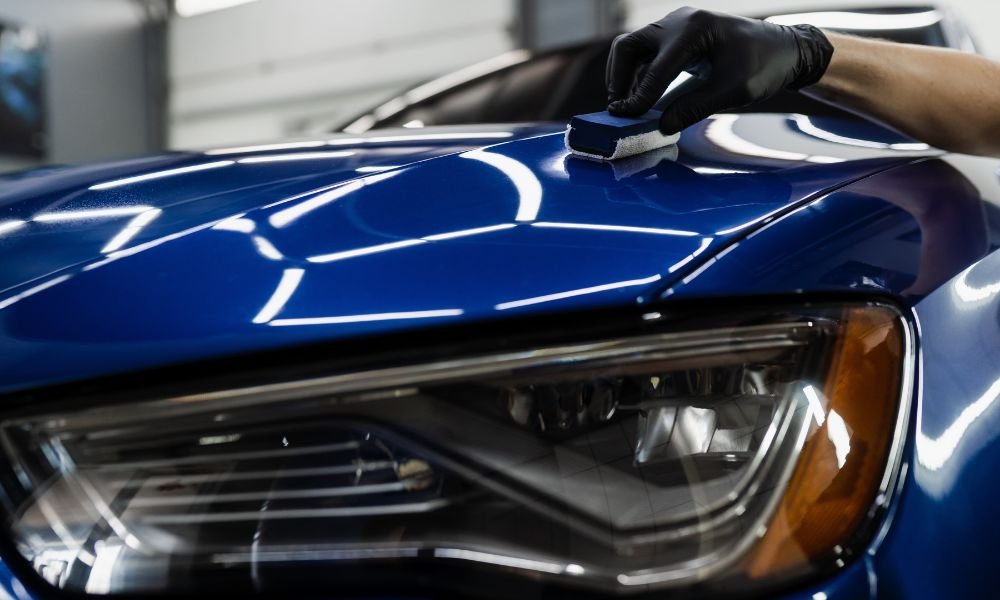Frequently Asked Questions Concerning Ceramic Coating Philadelphia Services Answered
Frequently Asked Questions Concerning Ceramic Coating Philadelphia Services Answered
Blog Article
Why Ceramic Finishing Is the Ultimate Option for a Flawless Finish
Ceramic layer has actually become a leading option for those seeking a perfect coating for their vehicles, thanks to its exceptional longevity and protective attributes. This innovative liquid polymer not just bonds perfectly with manufacturing facility paint but likewise offers a powerful obstacle against typical hazards such as scratches, UV rays, and ecological toxins. Its hydrophobic properties simplify upkeep while improving aesthetic allure. However, comprehending how this innovation compares to traditional techniques and exploring its application subtleties can reveal much more about its value. What variables absolutely set ceramic covering apart?
What Is Ceramic Layer?

When used appropriately, ceramic covering creates a hydrophobic surface area that fends off water and dust, making it much easier to preserve and cleanse. Unlike traditional waxes or sealers, which normally use short-lived defense, ceramic coverings can last for several years, depending upon the product high quality and application technique. The procedure of applying ceramic finish requires precise preparation, consisting of comprehensive cleansing and sometimes repaint correction, to make sure optimal bonding and effectiveness.
Ceramic finishings are not limited to auto surface areas; they can also be used on various materials, consisting of glass, metal, and plastics, offering a flexible solution for boosting protection. On the whole, ceramic finishing represents a significant development in surface area defense technology, integrating both functional and aesthetic advantages for a large range of applications.
Advantages of Ceramic Covering
While several surface area protection alternatives exist, the advantages of ceramic finish attract attention as a result of its distinct properties and lasting efficiency. One of the main benefits is its remarkable resilience. Ceramic Coating Philadelphia. Unlike traditional wax or sealers that need frequent reapplication, ceramic layers give a durable layer that can last for several years, substantially reducing maintenance initiatives
One more significant benefit is improved protection versus ecological contaminants. Ceramic coatings develop a hydrophobic surface area that wards off water, dust, and numerous contaminants, making it simpler to clean. This feature not only protects the vehicle's look yet likewise lessens the threat of deterioration and oxidation, particularly in rough climate condition.
Furthermore, ceramic layers supply premium resistance to UV rays, stopping fading and deterioration of paint with time. This UV defense is important for preserving the aesthetic worth of surface areas and lorries exposed to direct sunshine.
In addition, the shiny coating attained with ceramic covering enhances the total aesthetic appeal, offering surface areas a showroom-quality luster. In general, ceramic layers represent a substantial development in surface area protection innovation, providing long-lasting benefits that accommodate both functional and visual requirements.
Exactly How It Functions
Comprehending the scientific research behind ceramic finishings reveals how they give such exceptional security and long life. At its core, a ceramic coating is a liquid polymer that chemically bonds with the vehicle's factory paint.
The application process includes several steps, including surface preparation, which is critical to accomplishing ideal bond. As soon as applied, the covering undergoes a treating procedure, throughout page which it hardens and forms a semi-permanent bond with the paint surface area. This bond is what identifies ceramic finishings from standard waxes and sealers, supplying a longer-lasting safety barrier that can endure for several years.
In addition, the thickness of the finish can boost its safety qualities, making sure that it can withstand harsh conditions. Eventually, the scientific research of ceramic finishes combines sophisticated products with cutting-edge application techniques to deliver an unparalleled level of security and visual improvement for lorries.
Comparison With Conventional Approaches
The advantages of ceramic finishes come to be specifically apparent when compared to conventional paint security techniques such as sealants and waxes. While waxes offer a short-lived shine, usually lasting a couple of weeks to a couple of months, ceramic finishings supply a long-lasting protective layer that can withstand for a number of years. This resilience substantially minimizes the regularity of reapplication, making ceramic layers a more cost-effective solution with time.
In addition, traditional approaches usually call for substantial preparation and multiple applications to attain a satisfactory degree of security. On the other hand, ceramic coverings bond at a molecular level with the lorry's surface, developing a robust shield versus environmental pollutants like UV rays, acid rain, and roadway salts. This check my reference bond enhances the car's resistance to scratches and swirl marks, which are widespread with conventional waxes and sealers.
Additionally, the hydrophobic residential or commercial properties of ceramic coverings repel water and dirt, bring about less complicated cleaning and upkeep. In contrast, wax and sealant-treated surface areas can attract gunk, demanding even more constant cleaning - Ceramic Coating Philadelphia. Generally, ceramic finishes not only offer remarkable security but also supply a much more aesthetically enticing and enduring surface, developing them as the recommended choice for critical vehicle proprietors
Application and Maintenance Tips

Utilizing a foam applicator, apply the coating in tiny sections, adhering to the manufacturer's guidelines concerning density and overlap. Allow adequate healing time between coats, commonly 24 hours, to ensure correct bonding. After application, it is important to avoid direct exposure to water or harsh elements for at least a week to permit the finishing to completely treat.
Additionally, utilizing a ceramic maintenance spray can enhance the covering's hydrophobic residential properties and longevity. Routine examinations for any kind of indicators of wear will assist preserve the layer's stability and protect that immaculate coating.
Final Thought
In final thought, ceramic covering arises as a premium alternative for achieving a remarkable auto finish. By forming a durable bond with manufacturing facility paint, ceramic layer successfully shields against scratches, UV rays, and ecological pollutants.

Report this page